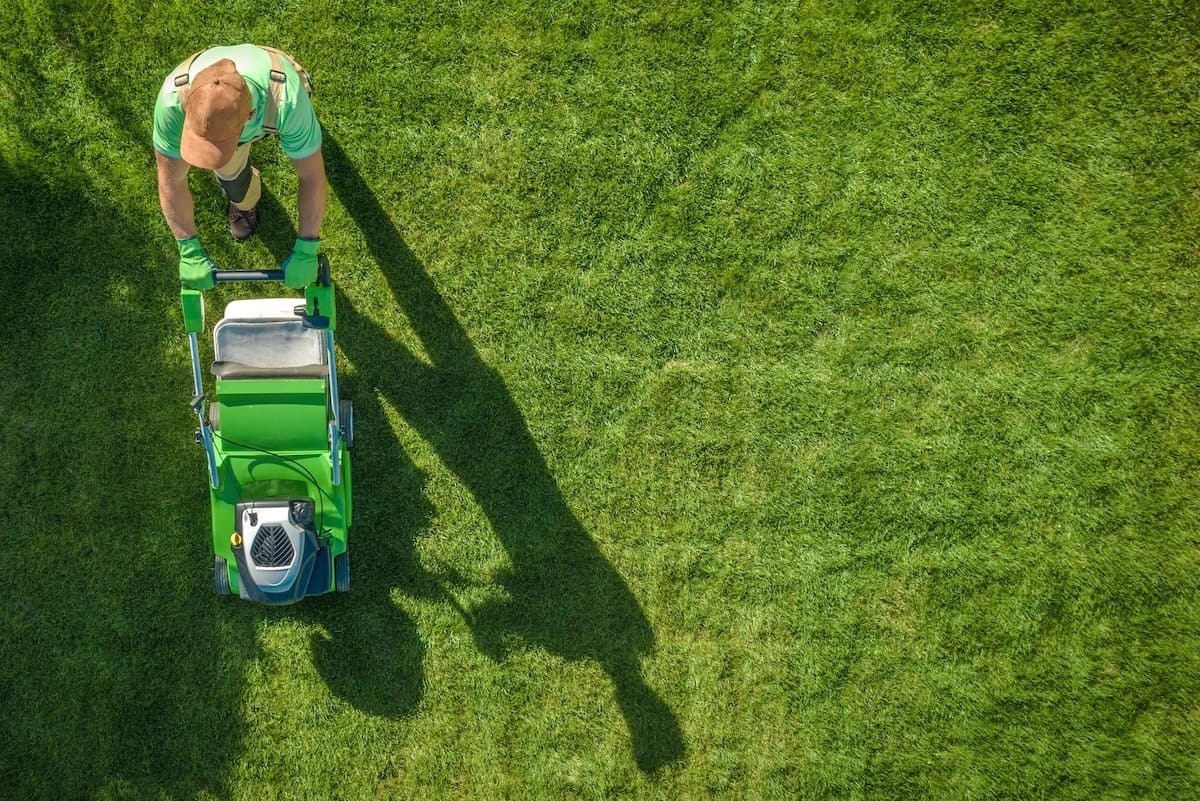You might think you know everything you need to know about lawn and grass care. However, I’m betting that some of the advice I’ll offer in this article will be new to you.
And why am I writing this article about grass right now? Because in most places in the United States, it’s time to put your lawn to bed for the season–if you haven’t already.
On the other hand, if you happen to be reading this in the spring, then this will be helpful information as well.
Common lawn and grass care mistakes
You have to understand that there’s more to keep a lawn neat and tidy than just pushing a mower.
I spoke with an expert at TruGreen and here’s what I learned: if you want to have a great lawn, you need to be aware of some basic lawn and grass care methods.
Knowing the mistakes to watch for is the first step to a gorgeous green lawn that can be an outdoor living room and playspace for family and friends.
So if you want your outdoors to be in tip-top shape this summer, keep the following lawn care mistakes, courtesy of TruGreen, in mind so you don’t make them.
Removing the lawn clippings after mowing
Lawn clippings are a great source of nutrients for your soil.
Rather than bagging grass clippings when you mow, recycle the clippings back into the soil.
However, if you can’t stand the feeling of grass clippings clinging to your ankles, at least dump your grass clippings into your garden, where these clippings can act like free mulch.
Planting the wrong type of grass for your lawn
Planting unsuitable grass or plant types for your region is an easily avoidable mistake.
Ask a lawn care expert or visit the website of your local cooperative extension office for a list of the plants and grass types that will thrive with your average temperature and soil type.
For example, my local cooperative extension office would be through Penn State, because I live in Pennsylvania. If you live in New Jersey, it would be Rutgers. And in Michigan it is Michigan State.
Not caring about how your fertilize your lawn
Fertilizing at the incorrect rate or the incorrect time of year for your type of grass can seriously damage your lawn.
Research the best time and rate to fertilize your grass to get maximum results. Again, that local cooperative extension office could help.
Also, fertilizer is a great source of nutrients for your lawn but it doesn’t do much for your sidewalk, driveway or street.
It’s important to keep fertilizer applications on target to avoid potential nutrient run-off.
Seeding your lawn at the wrong time
Homeowners–especially new ones or those looking to improve their home’s curb appeal–are eager to get their lawn looking great. So, they’ll seed grass as a way of thickening up their lawn.
However, seeding is typically best to do in the fall. That’s when grass is going into dormancy for the winter.
So, if you decide you want to seed your lawn, don’t waste your grass seed at other times of the year. You’ll just be putting out feed for the birds.
Trimming lawn edges aggressively
When using a string trimmer to edge your lawn, keep in mind that if you get too close to the base of a tree, you may actually kill the tree over time.
It’s important to be mindful of trees and shrubs when caring for your lawn.
Have you ever noticed how wooden mailbox posts often look like they’ve been gnawed by a beaver? Imagine what a trimmer is doing to a tree!
Take care not to overwater or underwater your grass
Watering is a tricky task. Avoid over or under watering your lawn–a slow steady water once a week is a good rule of thumb.
Lawns require a minimum of one inch per week of water–or as much as local water restrictions allow. Usually, you can get this in about 30 minutes of watering.
Be mindful of the weather and time of day when watering as well.
Watering in the heat of the day actually wastes water to evaporation; instead, water early in the morning to maximize the moisture on your lawn.
Also, to save water and resources, set up a rain barrel system so that you’re not using “new” water when you could be recycling water you’ve collected.
Don’t cut your lawn too much or grass too low
Some homeowners try to reduce the number of times they mow by mowing too low, essentially “scalping” the grass.
This can put the lawn into shock and allow weeds and insects to take over.
I raise my hand as guilty of cutting the grass too low to cut down on the times I had to mow. Only problem? I ended up frying my grass in the process.
Cut it a little longer and just accept that you may have to mow more frequently.
Additionally, mowing with a dull blade increases water loss from plants and requires more gasoline to power the mower. Or drains the power on your battery operated lawn mower.
Follow all instructions on lawn care
All lawn care products come with instructions for proper use. Be sure to read and follow the instructions.
By doing so, you will avoid some potentially serious mistakes that could damage your lawn and the environment.
Final thoughts on lawn and grass care
If you’d like more help caring for your lawn, as I mentioned, you can always reach out to the local Cooperative Extension Service of your land-grant university.
They can help direct you to appropriate grass and lawn products.
In addition, those horticulture experts can advise you on setting a healthy watering schedule as well as identifying any problems your yard may have.

